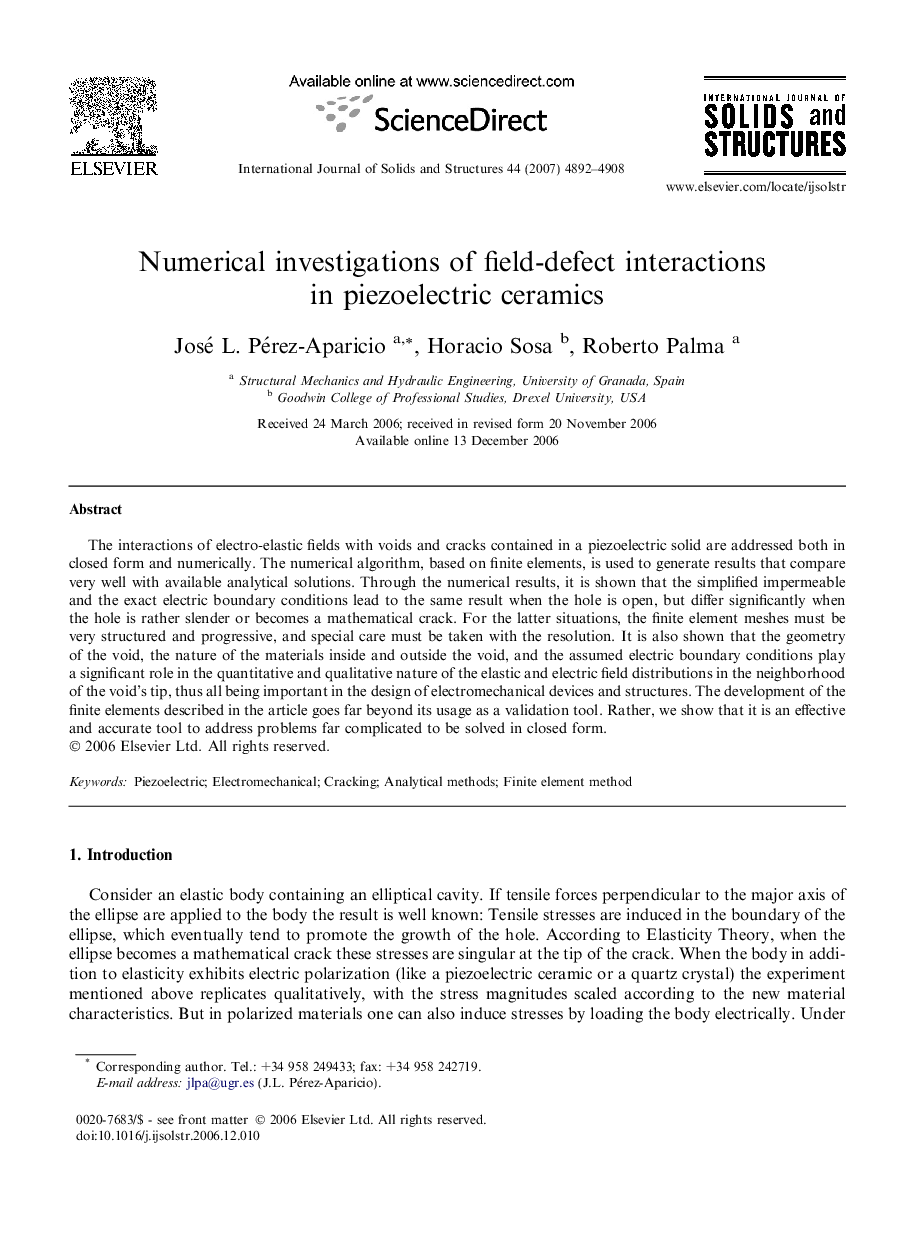| Article ID | Journal | Published Year | Pages | File Type |
|---|---|---|---|---|
| 280608 | International Journal of Solids and Structures | 2007 | 17 Pages |
The interactions of electro-elastic fields with voids and cracks contained in a piezoelectric solid are addressed both in closed form and numerically. The numerical algorithm, based on finite elements, is used to generate results that compare very well with available analytical solutions. Through the numerical results, it is shown that the simplified impermeable and the exact electric boundary conditions lead to the same result when the hole is open, but differ significantly when the hole is rather slender or becomes a mathematical crack. For the latter situations, the finite element meshes must be very structured and progressive, and special care must be taken with the resolution. It is also shown that the geometry of the void, the nature of the materials inside and outside the void, and the assumed electric boundary conditions play a significant role in the quantitative and qualitative nature of the elastic and electric field distributions in the neighborhood of the void’s tip, thus all being important in the design of electromechanical devices and structures. The development of the finite elements described in the article goes far beyond its usage as a validation tool. Rather, we show that it is an effective and accurate tool to address problems far complicated to be solved in closed form.
